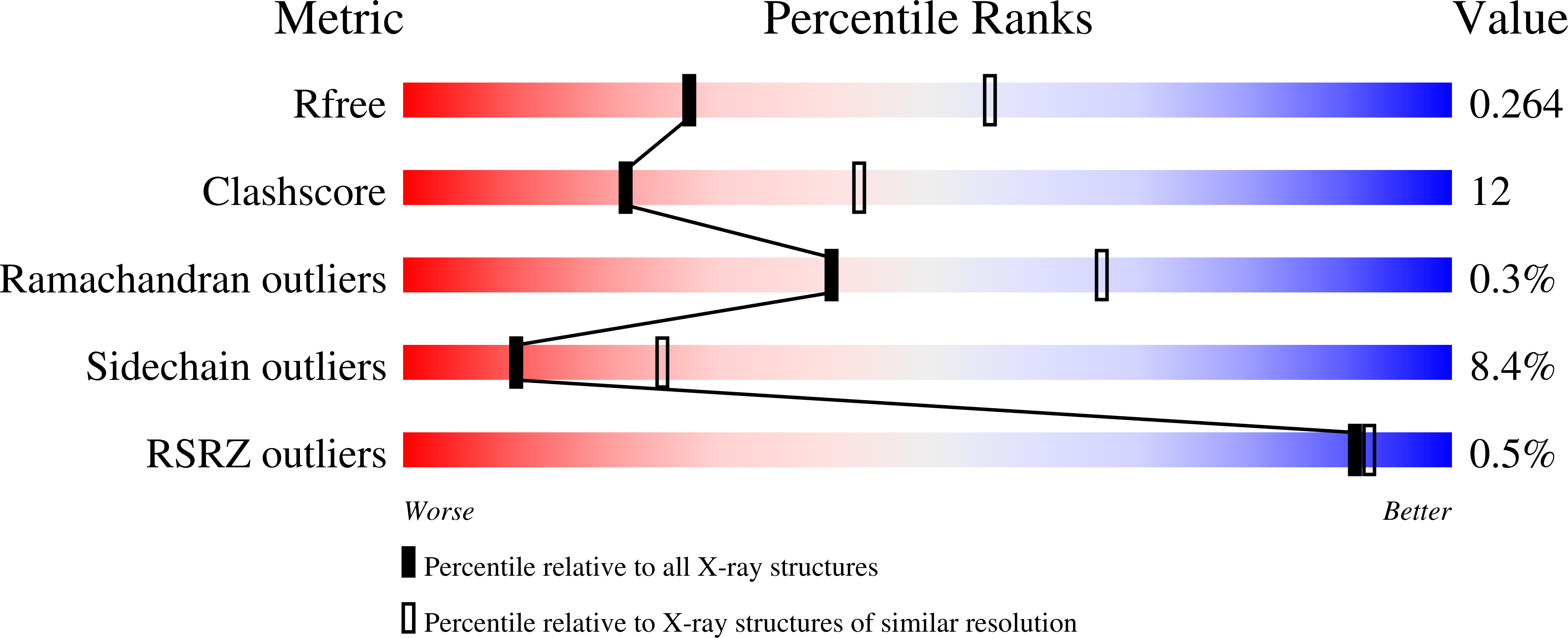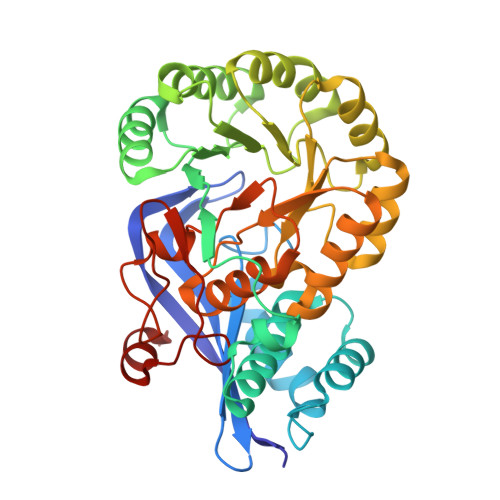Structural basis for the substrate specificity and the absence of dehalogenation activity in 2-chloromuconate cycloisomerase from Rhodococcus opacus 1CP.
Kolomytseva, M., Ferraroni, M., Chernykh, A., Golovleva, L., Scozzafava, A.(2014) Biochim Biophys Acta 1844: 1541-1549
- PubMed: 24768773
- DOI: https://doi.org/10.1016/j.bbapap.2014.04.008
- Primary Citation of Related Structures:
4M0X - PubMed Abstract:
2-Chloromuconate cycloisomerase from the Gram-positive bacterium Rhodococcus opacus 1CP (Rho-2-CMCI) is an enzyme of a modified ortho-pathway, in which 2-chlorophenol is degraded using 3-chlorocatechol as the central intermediate. In general, the chloromuconate cycloisomerases catalyze not only the cycloisomerization, but also the process of dehalogenation of the chloromuconate to dienelactone. However Rho-2-CMCI, unlike the homologous enzymes from the Gram-negative bacteria, is very specific for only one position of the chloride on the substrate chloromuconate. Furthermore, Rho-2-CMCI is not able to dehalogenate the 5-chloromuconolactone and therefore it cannot generate the dienelactone. The crystallographic structure of the homooctameric Rho-2-CMCI was solved by molecular replacement using the coordinates of the structure of chloromuconate cycloisomerase from Pseudomonas putida PRS2000. The structure was analyzed and compared to the other already known structures of (chloro)muconate cycloisomerases. In addition to this, molecular docking calculations were carried out, which allowed us to determine the residues responsible for the high substrate specificity and the lack of dehalogenation activity of Rho-2-CMCI. Our studies highlight that a histidine, located in a loop that closes the active site cavity upon the binding of the substrate, could be related to the dehalogenation inability of Rho-2-CMCI and in general of the muconate cycloisomerases.
Organizational Affiliation:
G.K. Skryabin Institute of Biochemistry and Physiology of Microorganisms, Russian Academy of Sciences, 142290 Pushchino, Nauka Prospect 5, Moscow region, Russia.
















